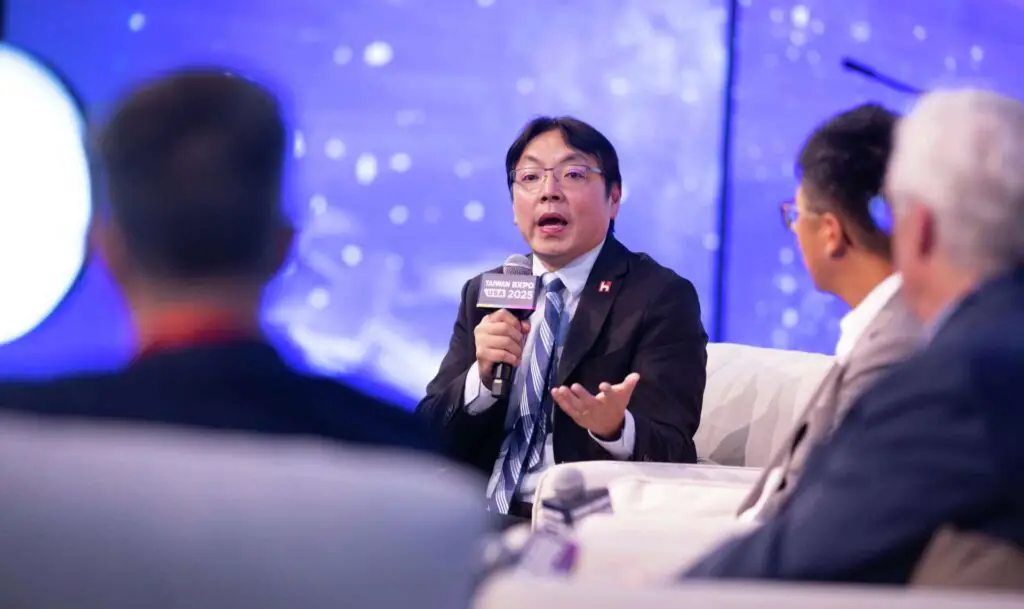Techy Quantum: (22,August,2025), The global race to dominate artificial intelligence AI is shifting from research labs to factory floors. Foxconn, the Taiwan based tech manufacturing giant best known for assembling Apple’s iPhones, is now betting big on Houston, Texas.
The company sees an opportunity to create a skilled AI workforce in Houston, positioning the city as a future hub for advanced AI hardware manufacturing.
Houston, famous for its energy and aerospace industries, may not traditionally be seen as a tech city. But Foxconn believes the city holds unique advantages to build the next generation of AI manufacturing talent.
According to Dr. Emily Chen, Professor of Industrial Engineering at Rice University, Houston’s existing industrial base gives it an edge. Workers in aerospace and energy already have experience with complex systems.
With retraining, they can easily adapt to assembling supercomputers and AI systems. This foundation explains why Foxconn is confident that an AI workforce in Houston can grow faster than in many other U.S. cities.
Nvidia’s Supercomputers and the Skills Gap
Nvidia’s flagship AI supercomputer platform is a marvel of engineering, containing nearly two miles of cable in each system. Assembling such machines requires specialized technicians who can handle intricate wiring, advanced cooling systems, and integration of high performance chips.
In 2023, Nvidia partnered with a Houston based training institute to address this skills gap. The results were promising, 85% of participants successfully transitioned into AI assembly roles.
Workers from oil and aerospace backgrounds adapted quickly. Trained technicians earned 25 to 30% higher salaries than in their previous jobs.
This case study shows how the AI workforce in Houston can bridge the gap between traditional industries and future facing AI manufacturing.
The global AI hardware race is accelerating. Countries like China, South Korea, and Taiwan are investing heavily in AI manufacturing, making workforce development a national priority.
John Keller, Senior Analyst at Gartner explains. AI is not just about algorithms. Whoever builds the physical AI systems will control the future of the industry. Houston has the potential to become the US leader in AI hardware manufacturing.
Maria Lopez, Workforce Development Leader in Texas adds, Houston’s resilience is unmatched. From energy crashes to hurricanes, the city has rebuilt itself time and again.
Now, it’s ready to reinvent itself with AI. These expert opinions reinforce why building an AI workforce in Houston is not just a local initiative, but a national imperative.
Challenges in Building Houston’s AI Workforce
Despite the enthusiasm, significant challenges remain. Skill Gaps Houston’s workforce is experienced in heavy industries, not AI assembly. Retraining programs are critical.
Educational Pipeline Universities must expand beyond coding and include AI hardware and robotics in their programs. Competitive Wages Foxconn may face higher labor costs in Texas compared to Asia.
Talent Retention Trained workers could be lured away by other tech firms. Overcoming these hurdles will determine whether Houston can truly become America’s center for AI manufacturing.
For James Rodriguez, a 34 year old former oil technician in Houston, the shift was life changing. When oil prices fell, I lost my job. I joined a pilot AI training program supported by Foxconn.
At first, I thought AI was only for programmers, but my wiring and system maintenance background gave me an advantage. Today, I’m assembling AI systems that power the future.
Stories like James’s highlight how the AI workforce in Houston can emerge by retraining existing talent instead of starting from scratch.
Foxconn’s decision to focus on Houston is part of a larger U.S. strategy to secure supply chains and reduce reliance on Asian manufacturing. By training a strong AI workforce in Houston, America can:
Create thousands of high paying jobs. Protect critical technology supply chains. Establish Texas as a global hub for AI hardware.
This aligns with the Biden administration’s policies to bring advanced manufacturing back to the United States.
Houston in 2030
If Foxconn’s bet succeeds, by 2030 Houston could, Become the largest AI supercomputer assembly hub in the US, Train tens of thousands of AI technicians every year, Export talent and expertise globally.
Reinvent itself as the capital of America’s AI workforce. Such a transformation would reshape Houston’s economic identity, moving it from an oil powerhouse to a center of AI innovation.
Houston has always been a city of reinvention from energy and aerospace to medicine and space exploration. Now, with Foxconn’s investment and Nvidia’s demand for skilled technicians, the city faces its next great transformation.
By nurturing an AI workforce in Houston, the U.S. can secure its position in the global AI race and prove that the future of technology is not just imagined in Silicon Valley it is built on the factory floors of Texas.

